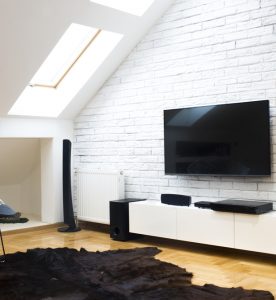4 Ways to Get the Best Sell Sheet Designs

Thanks to Linesheets, you’ll never have to Google “how to make a linesheet” again. Instead, you can turn a sell sheet template into sales gold. That said, even the best customizable layout can leave you wondering which elements to include on your linesheet (and which to leave out). But, the question remains: How do you know if enough is enough?
4 Ways to Create the Best Sell Sheet Designs
With a solid plan, you’ll never have to wonder again. Here are four ways to create the best linesheet designs each and every time:
1. Learn From Others
Trying to craft a linesheet from scratch is hard — unless you’re an experienced graphic designer with an eye for detail, spacing and overall aesthetics. There are just too many moving parts to get everything right the first time, especially if you’re new to it. While we’re big fans of the whole “try, try again” adage, mistakes can be costly, both in terms of wasting resources and wasting your buyer’s time, so efficiency is key.
Before you get to work, get online and search Google images for linesheets to see what the competition is up to. It’s a great way to see what you like — but it’s also an easy way to see what you don’t want to replicate. As an outsider, you’ll be able to cast a critical eye and notice things like how distracting it is when an image is off-center or how a professional logo helps establish trust.
Better yet, go straight for a sell sheet template and let the experts do the heavy lifting. Instead of doing guesswork, you can get straight to work. Don’t waste time hemming and hawing over columns and headers — just fill in the blanks in the template and move on with your day. You can still adjust certain aspects to reflect your preferences and your branding, but there’s a huge difference between starting with a blank page and building on a killer foundation.
Sick of making manual linesheets? Learn more about Linesheets — the tool that makes your job easier.
2. Be Detailed
Your linesheet should anticipate the needs and questions of a buyer. It’s important to be detailed, but the content itself matters, too. A standard linesheet should provide the buyer with all relevant information. Here’s exactly what you should include on your sell sheet:
- Brand name
- Logo
- Point of contact
- Collection name and image
- Product name
- Product SKU or item number
- Product image(s)
- Wholesale price
- Suggested retail price
- Product options such as sizes and colors
- Minimum order requirements/pre-pack quantities
- Payment terms
- Shipping information
Your goal is to answer buyer questions before they have to ask them. No one wants to look up pricing for a dozen different products and only see a t-shirt listing in white when you have it in a dozen different hues and sizes. Make a little space go a long way by grouping similar products and listing various sizes and colors available to indicate variety.
Every time a buyer needs to reach out for clarification or has to hunt for your phone number, you’re making their job harder. It probably goes without saying (but it’s important enough that we’ll say it anyway) that increased difficulty means lower sales. Make your brand the easiest choice from the get-go and watch the money roll in.
Related: How to Make a LineSheet
3. Utilize White Space Effectively
White space is the section of your linesheet that’s unused. It could be the margins, the empty space around your images or the entire page minus a central graphic. It’s easy to be so concerned about including every detail that you could overstuff your linesheet until it overflows, but you’d actually hurt your case.
White space is key for several reasons:
- It makes documents easier to scan and read
- It improves legibility and reading comprehension
- It helps shape flow and adds balance to the page
- It acts as a visual cue by emphasizing groupings like collections
- It attracts attention by dragging the reader’s focus to a single element or limited group of elements
Line sheets with an adequate amount of white space also just feel more luxe. Think about walking into a cluttered apartment versus strolling into an immaculate loft with clean countertops and sleek lines. Appearances matter and linesheets are often your first impression.
See: 6 Ways to Make a Product Sell Sheet Easily
4. Invest in Quality Images and Descriptions
Speaking of appearances, do your product images look like they were taken on a flip phone or can you see each item in vivid detail? You can absolutely take your own pictures, but you should invest in the right equipment and setting.
Ask yourself the following questions before taking your own product photos:
- Do you know how to balance the composition of a photo, including depth of field and calculating symmetry?
- Are you relying on existing overhead lighting, such as your living room lamp or do you have access to natural lighting or light modifiers when necessary?
- Do you have a backdrop or, better yet, a photo box to keep visual noise to a minimum?
- Can you use photo editing software to crop, color shift and tweak as needed?
If you answered “no” to any of those questions or simply don’t want the hassle of heaping more tasks on your already full plate, that’s absolutely fine. There’s strength in asking for help, and outsourcing is simply a controlled, effective way of asking for help.
Your photos should tell a story. You can absolutely DIY that process if you feel confident and are well-equipped, but otherwise, it’s worth contacting a pro to discuss a collaboration.
The Bottom Line
When all is said and done, your linesheet is your calling card. It’s the very first (and sometimes last) impression you give buyers, so you have to make it count.
Have more questions about the in and out of linesheets? Check out the Linesheets blog or sign up for the Linesheets web-based up and figure it all out as you go — it’s easier than you think!
More From Linesheets
Photo credit: Roman Samborskyi:Shutterstock.com

















